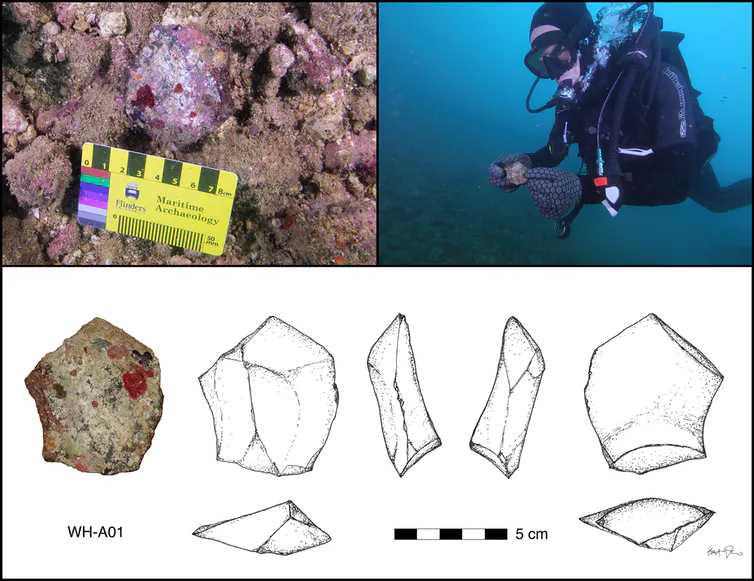7,000 years old Australian Aboriginal Sites Discovered Underwater
According to a report released July 1 , 2020, in the open-access journal PLOS ONE by Jonathan Benjamin of Flinders University, Adelaide, Australia and colleagues, ancient submerged Aboriginal archaeological sites await underwater rediscovery off the coast of Australia.
Sea levels were about 80 metres lower than today when humans first settled in Australia as early as 65,000 years ago. As the global atmosphere cooled, sea levels fluctuated but continued to fall.
As the world plunged into the last ice age, which peaked around 20,000 years ago, sea levels dropped to 130 metres lower than they are now.
Between 18,000 and 8,000 years ago the world warmed up. Melting ice sheets caused sea levels to rise.
Tasmania was cut off from the mainland around 11,000 years ago. New Guinea separated from Australia around 8,000 years ago.
The sea-level rise flooded 2.12 million square kilometres of land on the continental shelf surrounding Australia. Thousands of generations of people would have lived out their lives on these landscapes now underwater.
In this study, Benjamin and colleagues report the results of several field campaigns between 2017-2019 during which they applied a series of techniques for locating and investigating submerged archaeological sites, including aerial and underwater remote sensing technologies as well as a direct investigation by divers.

They investigated two sites off the Murujuga coastline of northwest Australia.
In Cape Bruguieres Channel, divers identified 269 artefacts dating to at least 7,000 years old, and a single artefact was identified in a freshwater spring in Flying Foam Passage, dated to at least 8,500 years old.
These are the first confirmed underwater archaeological sites found on Australia’s continental shelf.


These findings demonstrate the utility of these exploratory techniques for locating submerged archaeological sites.
The authors hope that these techniques can be expanded upon in the future for systematic recovery and investigation of ancient Aboriginal cultural artefacts.
They further urge that future exploration will rely not only on careful and safe scientific procedures but also on legislation to protect and manage Aboriginal cultural heritage along the Australian coastline.
Benjamin says, “Managing, investigating and understanding the archaeology of the Australian continental shelf in partnership with Aboriginal and Torres Strait Islander traditional owners and custodians is one of the last frontiers in Australian archaeology.” He adds, “Our results represent the first step in a journey of discovery to explore the potential of archaeology on the continental shelves which can fill a major gap in the human history of the continent.”